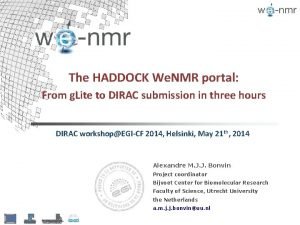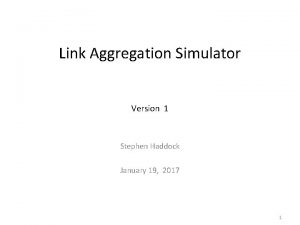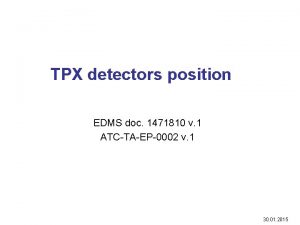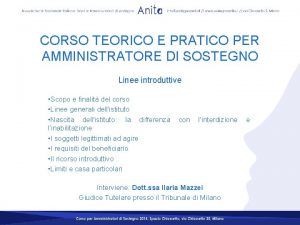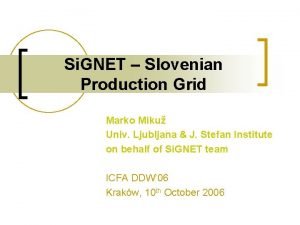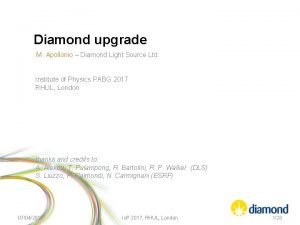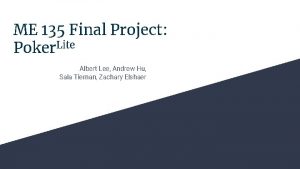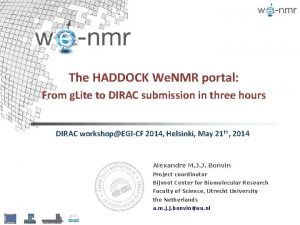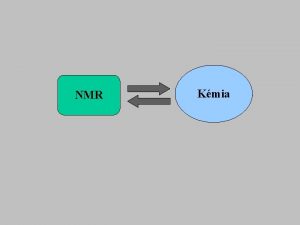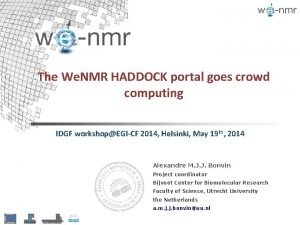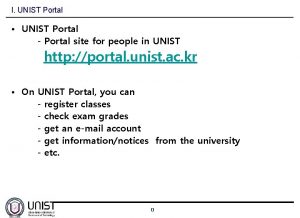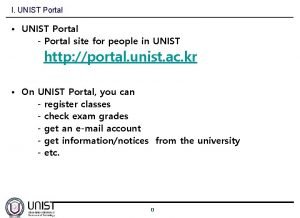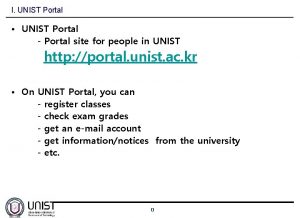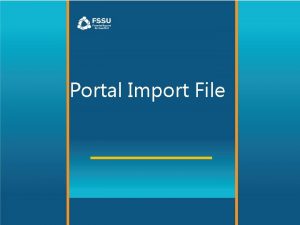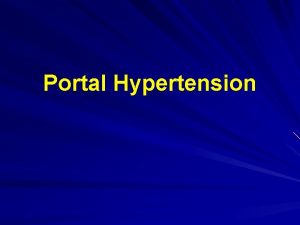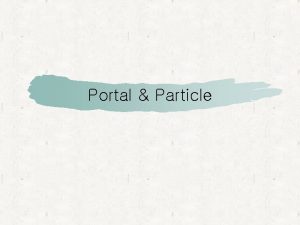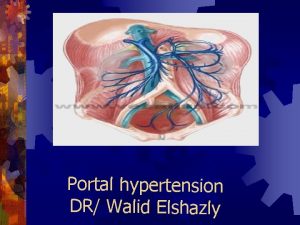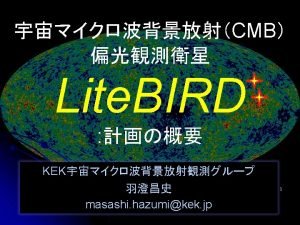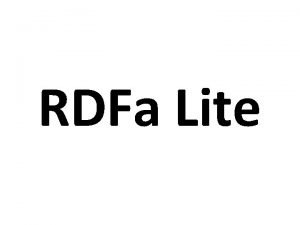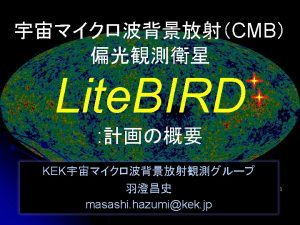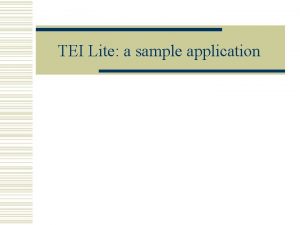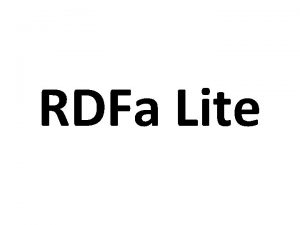The HADDOCK We NMR portal From g Lite



















- Slides: 19

The HADDOCK We. NMR portal: From g. Lite to DIRAC submission in three hours DIRAC workshop@EGI-CF 2014, Helsinki, May 21 th, 2014 Alexandre M. J. J. Bonvin Project coordinator Bijvoet Center for Biomolecular Research Faculty of Science, Utrecht University the Netherlands a. m. j. j. bonvin@uu. nl

The We. NMR VRC

A worldwide e-Infrastructure for NMR and structural biology NMR SAXS We. NMR VRC (May 2014) • • One of the largest (#users) VO in life sciences > 620 VO registered users (36% outside EU) ~ 1200 VRC members (>60% outside EU) ~ 100 000 CPU cores > 2000 SI 2 K CPU years > 5 M jobs User-friendly access to Grid via web portals www. wenmr. eu

A glimpse of the We. NMR services portfolio

Distribution of resources Currently (May 2014) ~ 100’ 000 CPU cores

1400 1200 1000 800 600 400 200 0 2010 -10 2011 -01 2011 -03 2011 -05 2011 -07 2011 -09 2011 -11 2012 -03 2012 -05 2012 -07 2012 -09 2012 -11 2013 -03 2013 -05 2013 -07 2013 -09 2013 -11 2014 -03 2014 -05 We. NMR VRC users distribution Over 1200 VRC and 620 VO members (64% / 36% outside Europe)! (May 2014) We. NMR VRC users

The HADDOCK portal

Haddock web portal

Molecular Docking

HADDOCK server users distribution Over 4000 registered (now all have access to the grid-server via robot cert)

What is happening behind the scene?

Grid daemons beyond a portal Data transfer / jobs User level – data transfer via web interface: • • Data input: ~10 k. B to 10 MB Data output: ~10 MB to a few GB Local cluster– • • data/jobs transfer: Job submission: ~10 to 50 single jobs Data: a few GB Grid level – data/jobs transfer (UI<->WMS<->CE<->WN) : • Job submission: ~250 to 2500 single jobs • Data transfer: ~1 to 10 MB • Output: ~1 -20 MB per job Some portals make use of storage elements for the data

HADDOCK Grid submission • Each job in the pool directory consists of: – Shell script to be executed on WN – Compressed tar archive containing the data/directory structure for the job – File specifying the location where results should be copied – JDL script with requirements/ranks for selecting suitable sites, e. g. : Requirements = (Member("OSG_VERSION", other. Glue. Host. Application. Software. Run. Time. Environment) || (other. Glue. CEPolicy. Max. CPUTime < 720 && other. Glue. CEPolicy. Max. CPUTime > 110 && Member("VO-enmr. eu-CNS 1. 2", other. Glue. Host. Application. Software. Run. Time. Environment)) ); Rank = ( other. Glue. CEState. Free. Job. Slots > 0 ? other. Glue. CEState. Free. Job. Slots : (-other. Glue. CEState. Waiting. Jobs * 4 / ( other. Glue. CEState. Running. Jobs + 1 )) - 1 ); • Software is remotely deployed and CE tagged with a software tag: • For HADDOCK: VO-enmr. eu-CNS 1. 2 • Submission via robot proxie – fully automated – no user/operator intervention.

HADDOCK goes DIRAC • DIRAC submission enabled at minimum cost! – In one afternoon, thanks to the help or Ricardo and Andrei – Clone of the HADDOCK server on a different machine – No root access required, no EMI software installation required • Minimal changes to our submission and polling scripts – Requirements and ranking no longer needed, only CPUTime Job. Name = "dirac-xxx"; CPUTime = 100000; Executable = "dirac-xxx. sh"; Std. Output = "dirac-xxx. out"; Std. Error = "dirac-xxx. err"; Input. Sandbox = {"dirac-xxx. sh", "dirac-xxx. tar. gz"}; Output. Sandbox = {"dirac-xxx. out", "dirac-xxx. err", "dirac-xxx-result. tar. gz"}; • Very efficient submission (~2 s per job – without changing our submission mechanism), high job throughput

Some statistics

Some statistics HADDOCK server grid jobs (total 2014 ~2. 5 M / DIRAC~1. 35 M) 1000000 #jobs (g. Lite) 100000 #jobs (IDGF) 10000 1000 Jan Feb 100 90 80 70 Mar 60 50 40 30 20 10 00 #jobs (DIRAC) Apr May (>14 th) g. Lite success % DIRAC 4 EGI success % Jan Feb Mar Apr May (>14 th)

Conclusions § Successful and smooth porting of the HADDOCK portal to DIRAC 4 EGI (initially tested on DIRAC France Grilles) § Higher performance / reliability than regular g. Litebased submission § Currently almost all HADDOCK grid-enabled portals redirected to DIRAC

Acknowledgments Arne Visscher VICI NCF (Big. Grid) DIRAC 4 EGI VT Bio. NMR We. NMR Ricardo Graciani, Andrei Tsaregorodtsev, . . . HADDOCK Inc. Gydo van Zundert, Charleen Don, Adrien Melquiond, Ezgi Karaca, Marc van Dijk, Joao Rodrigues, Mikael Trellet, . . . , Koen Visscher, Manisha Anandbahadoer, Christophe Schmitz, Panos Kastritis, Jeff Grinstead DDSG

The End Thank you for your attention! HADDOCK online: http: //haddock. science. uu. nl http: //nmr. chem. uu. nl/haddock http: //www. wenmr. eu
 Haddock nmr
Haddock nmr Wawa in atlanta
Wawa in atlanta Stephen haddock
Stephen haddock Chanson des nains bilbo le hobbit
Chanson des nains bilbo le hobbit Margaret haddock
Margaret haddock Soap lite
Soap lite Reopt lite
Reopt lite Sonnet lite
Sonnet lite Eil edms
Eil edms Family tree lite
Family tree lite Amministratore di sostegno lite tra fratelli
Amministratore di sostegno lite tra fratelli Caiq lite
Caiq lite Ml lite version
Ml lite version Gnet lite
Gnet lite Coflex tlc calamine lite 2 layer compression kit
Coflex tlc calamine lite 2 layer compression kit Pm lite
Pm lite Pabg light
Pabg light Hecvat lite
Hecvat lite Poker lite
Poker lite Finpack lite
Finpack lite
